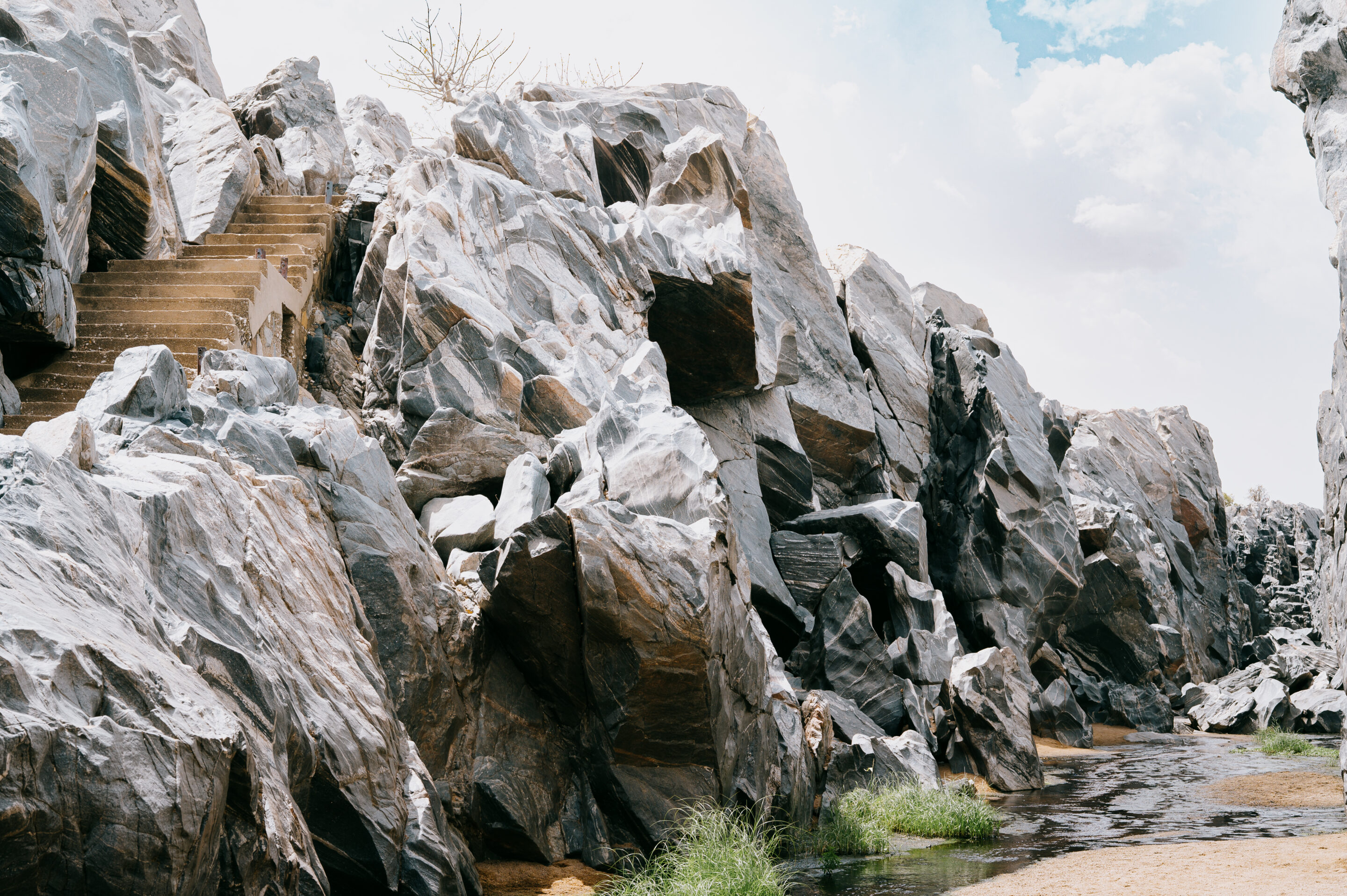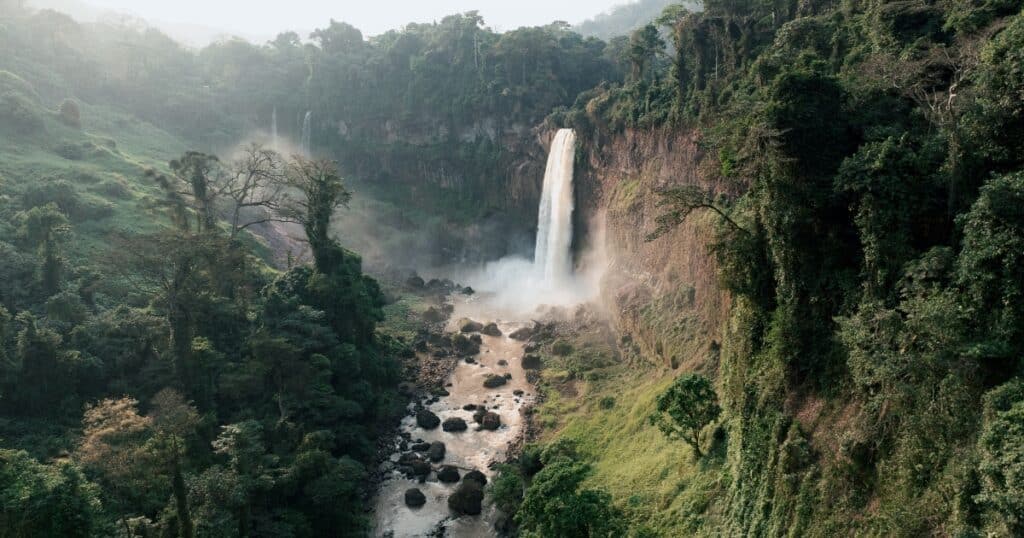
The mineral and surprising world of the Kola gorges
It was a mission of pure opportunity. My professional work had brought me to the vibrant heart of Northern Cameroon, and as fate would have it, my stay coincided with the public holiday marking the end of Ramadan in April 2023.
The air in Garoua was thick with celebration, but my mind was drawn to a name I’d heard spoken with a mix of awe and reverence: Kola. The Kola Gorge. It was described not as a destination, but as an experience, a geological secret whispered on the wind. With a precious day of freedom, the decision was simple. I had to go.
The journey began on the tarmac, an hour and a half of driving that carried me away from the city and deeper into the Sahelian landscape. Just before the town of Guider, the real adventure started. I turned off the main road and onto a small, dusty trail that felt like a deliberate departure from the modern world.
The car kicked up a cloud of yellow earth, a veil separating me from the familiar. When I finally arrived, there was a moment of profound confusion. I was expecting a canyon, a grand vista, but all I saw was a flat, sun-scorched plain. There was nothing. Then, my guide pointed. The Kola Gorge doesn’t announce itself; it is a secret the earth keeps.
It’s a magnificent wound, a scar carved deep into the crust, completely invisible until you are standing at its edge. To enter its depths, you must descend a narrow staircase carved directly into the rock. With each step down, the world above vanished, and the temperature climbed relentlessly. I was leaving the world I knew and entering the earth’s memory, a place ruled by stone and time.
Down at the bottom, the scale of the place was staggering. A tiny, shallow river, barely a memory of the torrent it becomes in the rainy season, flowed sluggishly over a bed of sand and rock.
On either side, sheer cliffs of metamorphic rock soared 30 meters into the sky, their surfaces a chaotic tapestry of grey, black, and rust-colored striations. They blocked out the sky, leaving only a sliver of brilliant blue above and creating a world unto itself. The path forward was barely a meter wide in places, a tightrope walk between the rock face and the water. Before me lay a two-kilometer journey into another dimension.
This was a purely mineral kingdom. The heat was a physical presence, radiating from the dark rocks with an intensity that shimmered in the air. Stepping on them felt like walking on hot coals; they were not only burning but also sharp, demanding careful, deliberate placement of every footstep.
The air was still and heavy. It was a hostile environment, and yet, it was achingly beautiful. The silence was absolute, broken only by the crunch of my own boots and the gentle lapping of the water. Here and there, impossibly, a few resilient plants clung to life in tiny crevices, a testament to the tenacity of existence. In this stark and unforgiving landscape, I felt a deep sense of my own fleeting presence against the backdrop of geological eons.
The story of Kola is not written in words, but in layers of stone, in the patient, persistent work of water against rock. It’s a profound lesson in scale and time, a place that forces you to reconsider your own significance.
Walking through the Kola Gorge was like walking through the bones of the world, a truly humbling experience that strips away the superfluous and connects you to something primal and immense. It’s more than a must-see; it’s a must-feel, a deep and lasting impression carved not just in the earth, but in the soul of anyone who walks its path.



